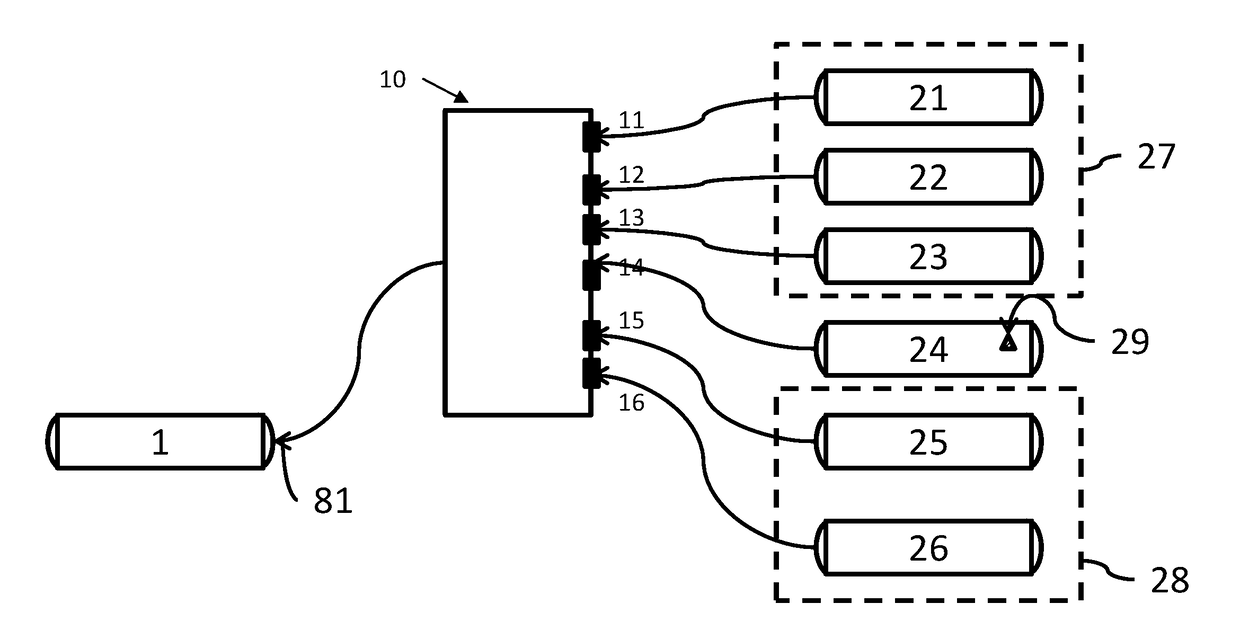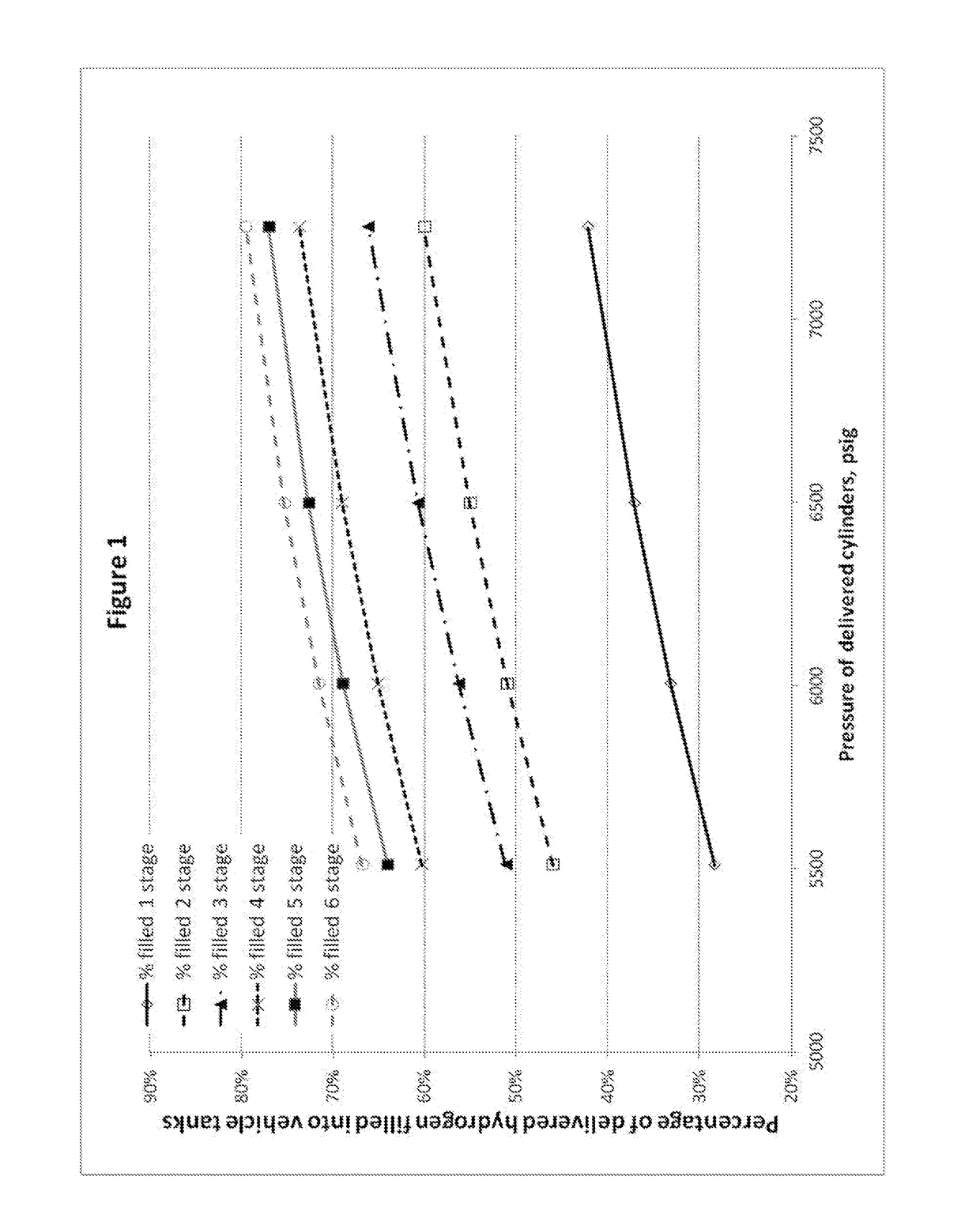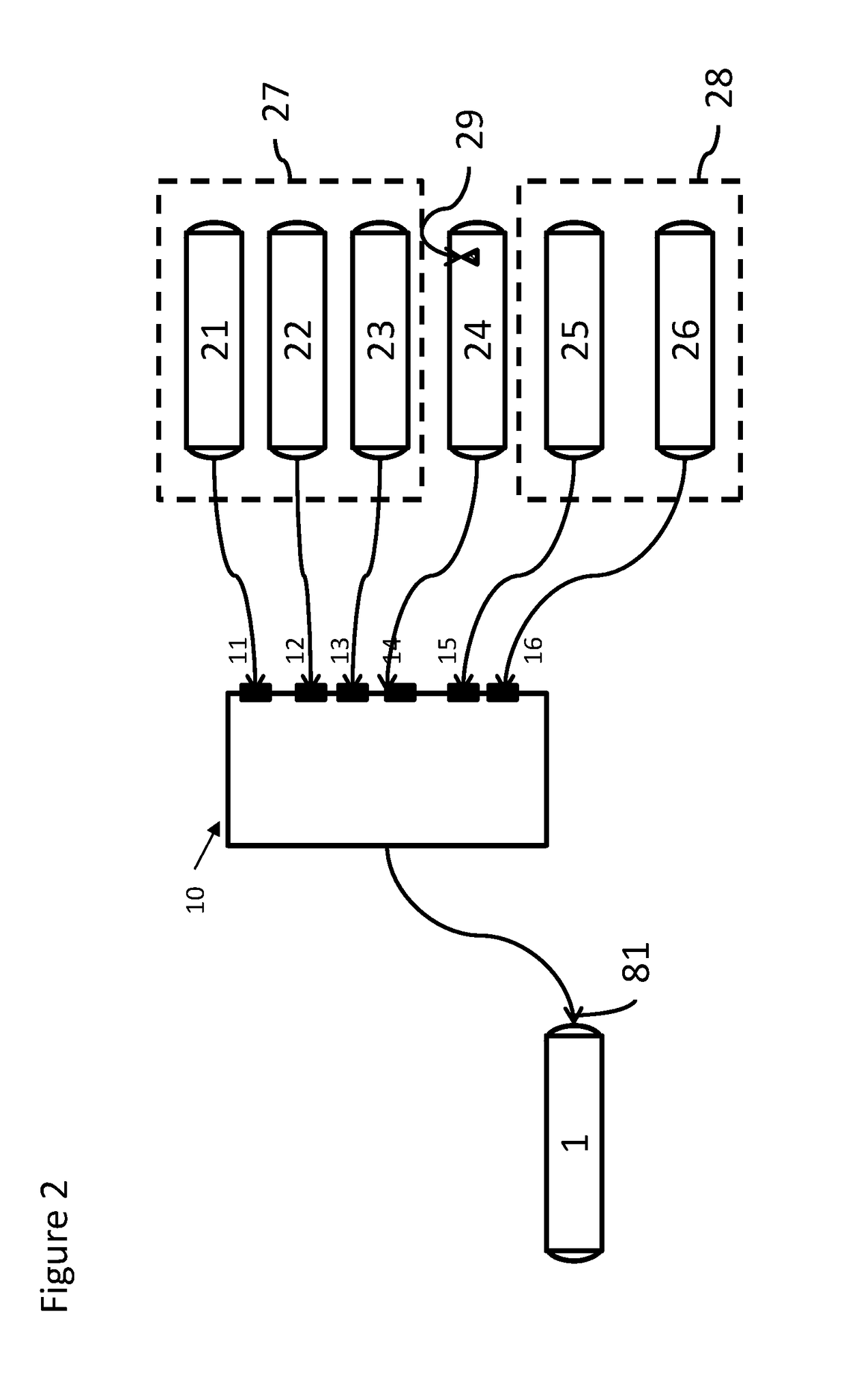Method, apparatus, and system for refueling hydrogen vehicles
a hydrogen vehicle and hydrogen technology, applied in the field of hydrogen vehicle refueling, can solve the problems of substantial maintenance requirements, substantial skill and care in sitting, sizing, installation and commissioning, and the inability to meet the needs of hydrogen storage on hydrogen powered vehicles
- Summary
- Abstract
- Description
- Claims
- Application Information
AI Technical Summary
Benefits of technology
Problems solved by technology
Method used
Image
Examples
Embodiment Construction
[0024]Described herein are a method and an apparatus for refueling hydrogen vehicles at a point remote from the hydrogen production which uses a cascade of compressed hydrogen sources which can vary in complexity from the extreme of a single source, to the maximum number of sources for which the dispenser apparatus is manufactured. The quantity and size of delivered gas sources may be adjusted to suit the volume of demand and the available equipment and quantity of compressed gas without any alteration to the refueling system.
[0025]An embodiment of the present invention provides a method of refueling hydrogen powered vehicles that employs delivered pressure cylinders that are pressurized to a pressure that is preferably greater than the intended vehicle fill pressure, connecting the delivered cylinders to a dispenser apparatus, and refilling vehicles without recompression at the refueling site from cylinders via the dispenser apparatus. The dispenser apparatus can be either transpor...
PUM
 Login to View More
Login to View More Abstract
Description
Claims
Application Information
 Login to View More
Login to View More - R&D
- Intellectual Property
- Life Sciences
- Materials
- Tech Scout
- Unparalleled Data Quality
- Higher Quality Content
- 60% Fewer Hallucinations
Browse by: Latest US Patents, China's latest patents, Technical Efficacy Thesaurus, Application Domain, Technology Topic, Popular Technical Reports.
© 2025 PatSnap. All rights reserved.Legal|Privacy policy|Modern Slavery Act Transparency Statement|Sitemap|About US| Contact US: help@patsnap.com



